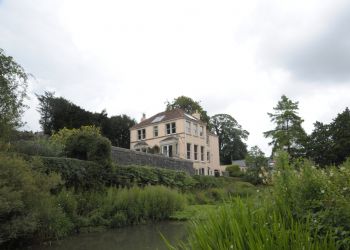What is a listed building survey?
A listed building survey is a specific type of inspection carried out on buildings that have been categorized as either Grade I, Grade II* or Grade II. Listing marks and celebrates a building’s special architectural and historic interest, and also brings it under the consideration of the planning system, so that it can be protected for future generations.
How will I know if the property I am interested is listed?
Generally speaking, the estate agent should let you know either verbally, or it will be on the listing criteria. If you are in doubt hen Historic England have a register of all the listed properties in England, and its CADW for Wales.
There is generally criteria that would make a property listed, but from our experience, it is not uncommon to find some truly remarkable and historic buildings that have been missed or perhaps just been lost or confused along the way. Historic England suggest that any building built before 1700 that has been kept in a reasonable condition will be listed, as are most buildings built between 1700 and 1840 that are in similarly good condition. However, some new buildings may also be listed due to its significant importance, although these are usually at least 30 years of age.
Why is a listed building survey different to a normal building?
It’s a good question, all buildings that are described as traditional construction will generally warrant the same methods of repair and construction regardless of listing. So whether it’s a Victorian terrace or Hampton Court Palace, the principles are the same! The difference is significance and legal. Significance in a conservation aspect is a complicated area and I will write a blog about this soon. Legal because planning and works to a listed building require different types of consents and failure to comply can land the building owner in a lot of trouble.
The Royal Institution of Chartered Surveyors state that a Surveyor should not undertake a survey to a building, he or she is not qualified to undertake. It is important to understand that traditional and historic buildings are different to modern buildings and require specialist knowledge.
Why do I need a Listed Building Survey, the Bank has told me all I need is a Homebuyers survey?
Homebuyers are not suitable generally for properties of complexity or built prior to 1930. We do not work for the banks, our aim s to protect our clients and ensure that you make a wise, safe, and confident purchase. Understanding the history, character, changes, and construction of your future home. We provide an outline of any care and repair work that is needed as well as the costs for these can also be found in the report. We can also advise and guide you through the process required when applying for Listed Building Consent. This will include the preparation and development of a Heritage Statement to accompany your application.
How many listed buildings are there in the UK?
Surprisingly, the total number of listed buildings is not known, as one single entry on the National Heritage List for England (NHLE) can sometimes cover a number of individual units, such as a row of terraced houses. However, we estimate that there are around 500,000 listed buildings on the NHLE.
How much does a listed building survey cost?
Generally, our surveys start around £750.00 and dependent on size, location and complexity can rise to approximately £1,500.00.
